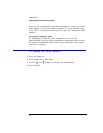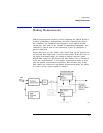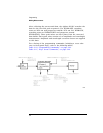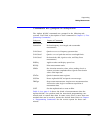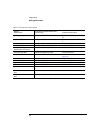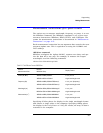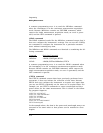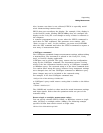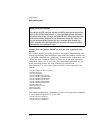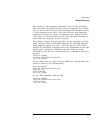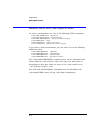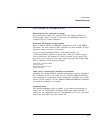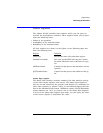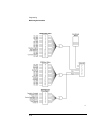
3-11
Programming
Making Measurements
Also, because new data is not collected, FETCh is especially useful
when characterizing transient data.
FETCh does not reconfigure the display. For example, if the display is
in the Peak WL mode, sending :FETCh:ARRay does not configure the
display to the List by WL even though an array of data is returned to
the computer.
A common programming error occurs when the :FETCh command is
used after an *RST command. This generates error number –230,
“Data corrupt or stale”. In this instance, you must send :INIT:IMM
after the *RST command and before the :FETCh command to capture a
new array of measurement data.
:CONFigure command
The CONFigure command changes measurement settings without taking
a measurement. The instrument is placed in the List by WL, List by
Ampl, or Peak WL display application.
CONFigure can be queried. The query returns the last configuration
setup by the CONFigure command. The instrument returns a string
which is the last instrument function sent by a CONFigure command
or MEASure query. The returned string is in the short command form.
Use caution when using this query, because if any instrument settings
were changed since the last CONFigure command or MEASure query
these changes may not be included in the returned string.
For example, if the last CONFigure command was:
:CONFigure:SCALar:POWer:WAVelength 1300NM, MAX
a CONFigure? query would return a string that is similar to the follow-
ing line:
“POW:WAV 1.300000e-6,0.01”
The 1300NM and resolution values track the actual instrument settings
and input signals. Notice that the quotation marks are part of the
returned string.
Return single or multiple measurement values
You can specify whether FETCh, READ, or MEASure returns a single
value (SCALar) or multiple values (ARRay). The following example
specifies SCALar data which returns a single value.
:MEASure:SCALar:POWer:WAVelength? MAX




